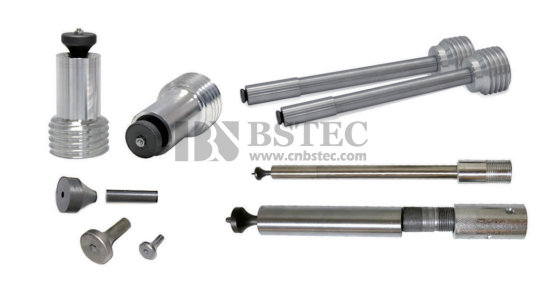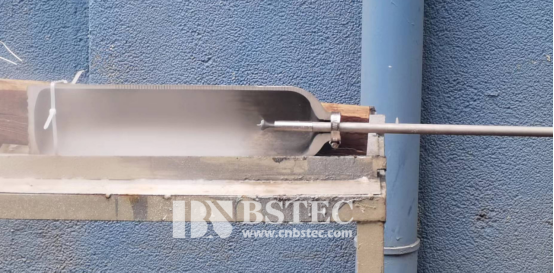Introduction of Internal Pipe Nozzle
Introduction of Internal Pipe Nozzle

An internal pipe nozzle refers to a device or attachment that is designed to be inserted into the inside of a pipe. It is used to control the flow of fluid or gas within the pipe system. The internal pipe nozzle can have various designs and functionalities depending on the specific application.

Some common types of internal pipe nozzles include:
Spray Nozzles: These are used to distribute liquids or gases in a fine spray pattern. They are commonly used in industries such as agriculture, firefighting, and chemical processing.
Jet Nozzles: These are designed to generate a high-velocity jet of fluid or gas. They are often used in cleaning applications, such as pipe and drain cleaning.
Diffuser Nozzles: These are used to distribute fluid or gas in a controlled manner to create a more even flow. They are commonly used in HVAC systems and industrial processes.
Mixing Nozzles: These are designed to mix two or more fluids or gases together. They are used in applications such as chemical processing, water treatment, and food processing.
Internal pipe nozzles are typically made of materials that are compatible with the fluid or gas being transported, such as stainless steel, brass, or plastic. They can be threaded or have other types of connections to ensure a secure and leak-free installation within the pipe system.
Internal Pipe Nozzle production:
Internal pipe nozzle production refers to the manufacturing process of producing nozzles that are designed to be inserted into the internal diameter of pipes. These nozzles are typically used for various applications such as cleaning, spraying, or directing the flow of fluids within the pipe.
The production process for internal pipe nozzles typically involves several steps. These may include:
Design and Engineering: The first step is to design the nozzle based on the specific requirements and applications. This involves considering factors such as the pipe diameter, fluid flow rate, pressure, and desired spray pattern.
Material Selection: The next step is to select the appropriate materials for the nozzle based on factors such as chemical compatibility, durability, and cost. Common materials used for internal pipe nozzles include boron carbide, tungsten carbide, and stainless steel.
Machining or Molding: Depending on the complexity and quantity of the nozzles required, they may be machined or molded. Machining involves using CNC (Computer Numerical Control) machines to shape the nozzle from a solid block of material. Molding, on the other hand, involves injecting molten material into a mold cavity to create the desired shape.
Finishing and Assembly: After the nozzle is machined or molded, it may undergo additional finishing processes such as polishing, deburring, or coating to enhance its performance and appearance. The nozzles may also be assembled with other components such as connectors or filters, depending on the specific application.
Quality Control: Throughout the production process, quality control measures are implemented to ensure that the nozzles meet the required specifications and standards. This may involve inspections, testing, and validation procedures.
Packaging and Shipping: Once the internal pipe nozzles are produced and pass the quality control checks, they are packaged and prepared for shipping to customers or distributors.
Overall, internal pipe nozzle production requires careful design, precision manufacturing, and quality control to ensure that the resulting nozzles meet the desired performance requirements and provide efficient fluid flow within pipes.
Internal Pipe Nozzle application:

Internal pipe nozzles are used in various applications to control the flow of fluids or gases within pipes. Some common applications of internal pipe nozzles include:
Spraying and atomizing: Internal pipe nozzles are used in spray systems to create a fine mist or spray pattern for applications such as cooling, humidification, dust suppression, or chemical spraying.
Mixing and agitation: Nozzles with specific designs can be used to create turbulence or agitation within the pipe, facilitating mixing of different fluids or chemicals.
Cleaning and descaling: High-pressure water or air nozzles are used to clean the interior surfaces of pipes, removing debris, scale, or other contaminants.
Gas injection: Nozzles are used to inject gases, such as oxygen or other chemicals, into pipes for various industrial processes, including combustion, chemical reactions, or wastewater treatment.
Cooling and heat transfer: Nozzles can be used to spray cooling fluids, such as water or coolant, inside pipes to remove heat generated by industrial processes or machinery.
Foam generation: Specialized nozzles are used to inject foam-forming chemicals into pipes to generate foam for firefighting, insulation, or other applications.
Chemical dosing: Nozzles are used to inject precise amounts of chemicals into pipes for water treatment, chemical dosing, or other industrial processes.
Pressure regulation: Nozzles with pressure control mechanisms are used to regulate the flow and pressure of fluids within pipes, ensuring optimal performance and preventing damage to the system.
Filtration and separation: Nozzles with filter elements or separation mechanisms are used to remove solid particles or separate different phases within the pipe, such as oil-water separation or gas-liquid separation.
Gas scrubbing: Nozzles can be used to inject scrubbing liquids or chemicals into pipes to remove pollutants or contaminants from gas streams, such as in air pollution control systems or industrial exhaust treatment.
These are just a few examples of the wide range of applications for internal pipe nozzles. The specific design, material, and operating parameters of the nozzle will depend on the requirements of the application and the characteristics of the fluid or gas being handled.













